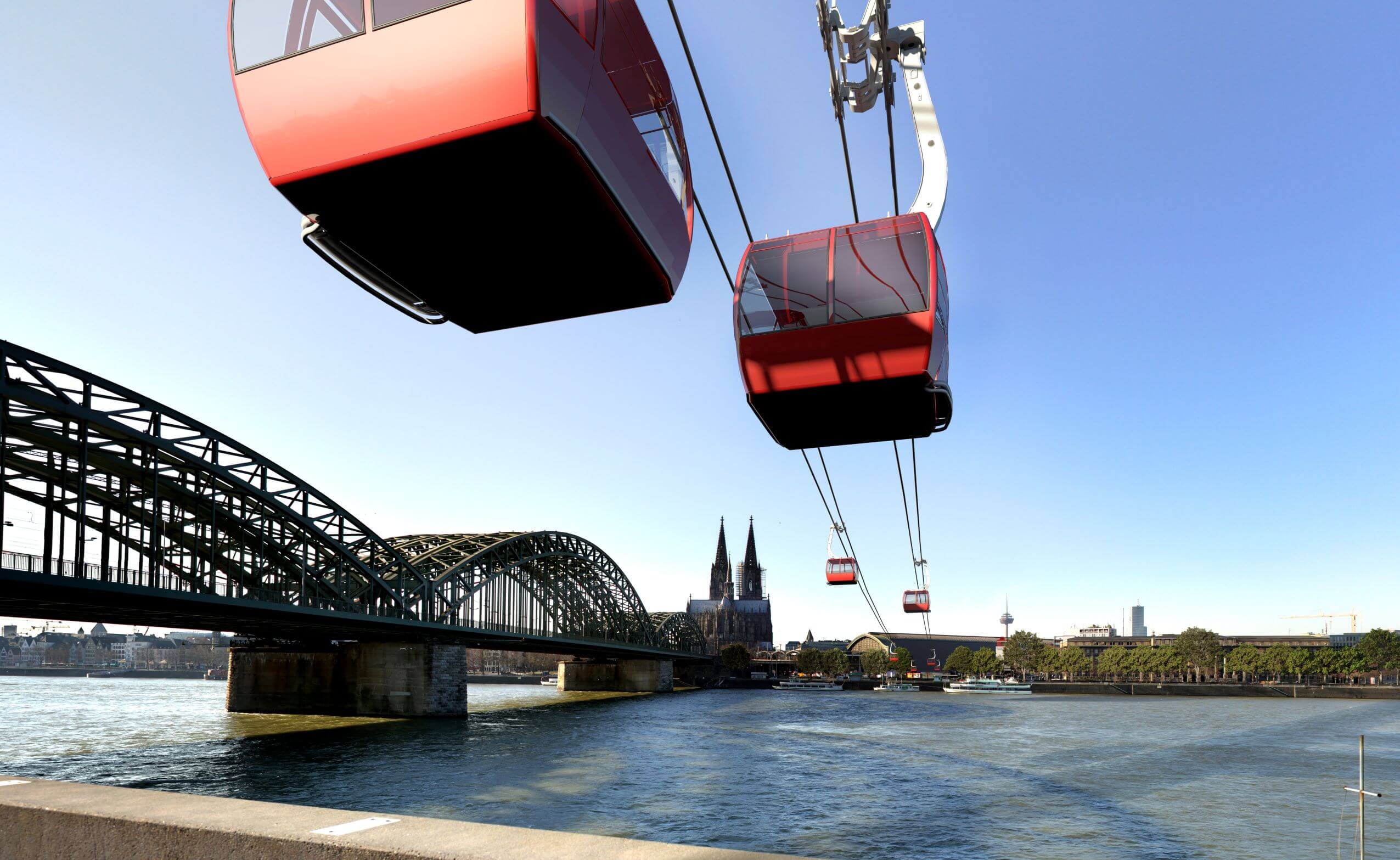
Cities, SI Urban 2/2020
Acceptance problems
Acceptance problems with hovering above: Where the cable car would run right across a building development and particularly over residential areas, this provokes resistance from neighbours. They claim protection of the airspace above their houses and feel disturbed if it is possible to see onto their balconies and patios and into their gardens from above. Such problems could be avoided if cable cars were routed preferably along public road space or over public green areas. Cable car projects are easier to implement in the suburban, less densely developed setting and in largescale industrial areas.
Acceptance problems with bus cost cutting: Another acceptance problem arises if urban cable cars are used as a reason to cut costs on the bus network. Areas that are at risk of losing their bus routes naturally object. Urban cable cars belong to offensive local public transport supply concepts and should therefore improve the local public transport provision. They are less suitable as levers for cost cutting measures.
Acceptance problems with restrictive interventions into car traffic: It can also be problematic if places for the supports and stations have to be sought on road space and if previous road traffic areas or car parking areas have to be restricted for them. This is the same problem as with the creation of bus lanes and separate rail tracks. However, the problem is significantly smaller, as the interventions are only at certain points. It is rare to have to close entire roads or junctions for this purpose.
Misunderstandings with P+R: Another problem issue concerns the danger invoked by some cable car critics that huge park & ride facilities would be required around the stations. This fear is based on the Alpine examples with large car parks at the bottom stations. However, it does not apply for urban cable cars; the stations here are preferred connection points to other means of local public transport by bus, tram, light railway, suburban railway, metro or railways stations. Apart from that, the setting is also a hotspot for pedestrian and bicycle traffic that should be able to arrive conveniently, safely and attractively at the cable car stations, which are ideally surrounded by a well-designed square. On mountain sections, the cable car can take on the role of a bicycle lift, as it is easy to take bikes in the large gondolas.
Cost discussion: Cable cars are obviously not available for free. The investment and operating costs are, however, substantially lower than for tramways, light railways, metros and suburban railways. Nonetheless, they form part of the typical competition for spending, alongside other sectors such as education, health and housing construction. This makes it all the more important to calculate their transport value, so that it is possible to prove which other transport expenditure can be saved through cable cars.
Composed by Heiner Monheim







